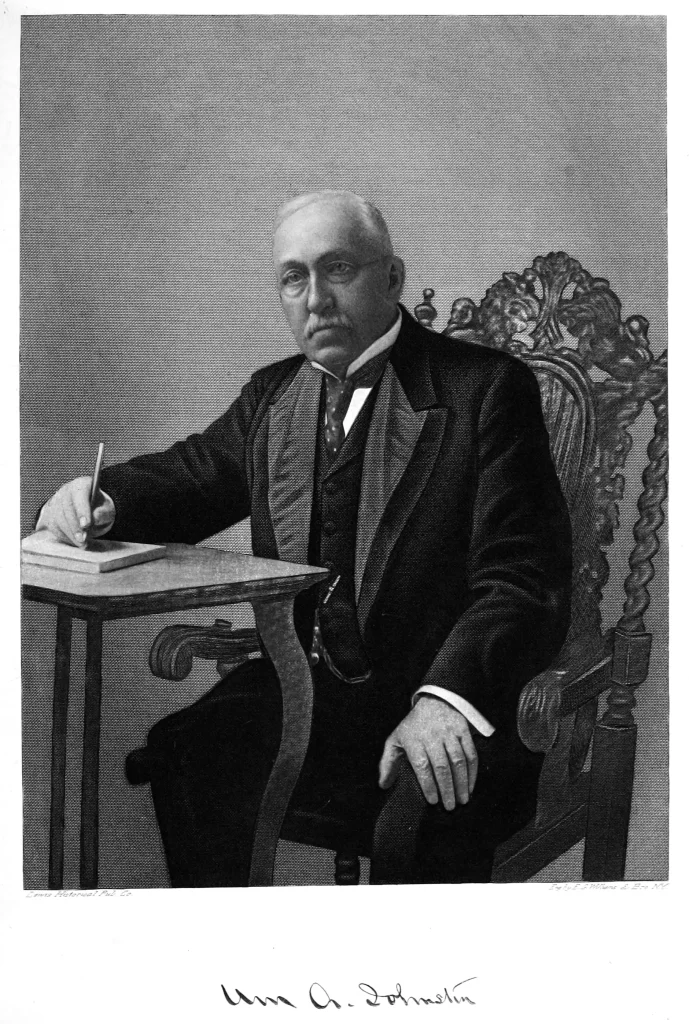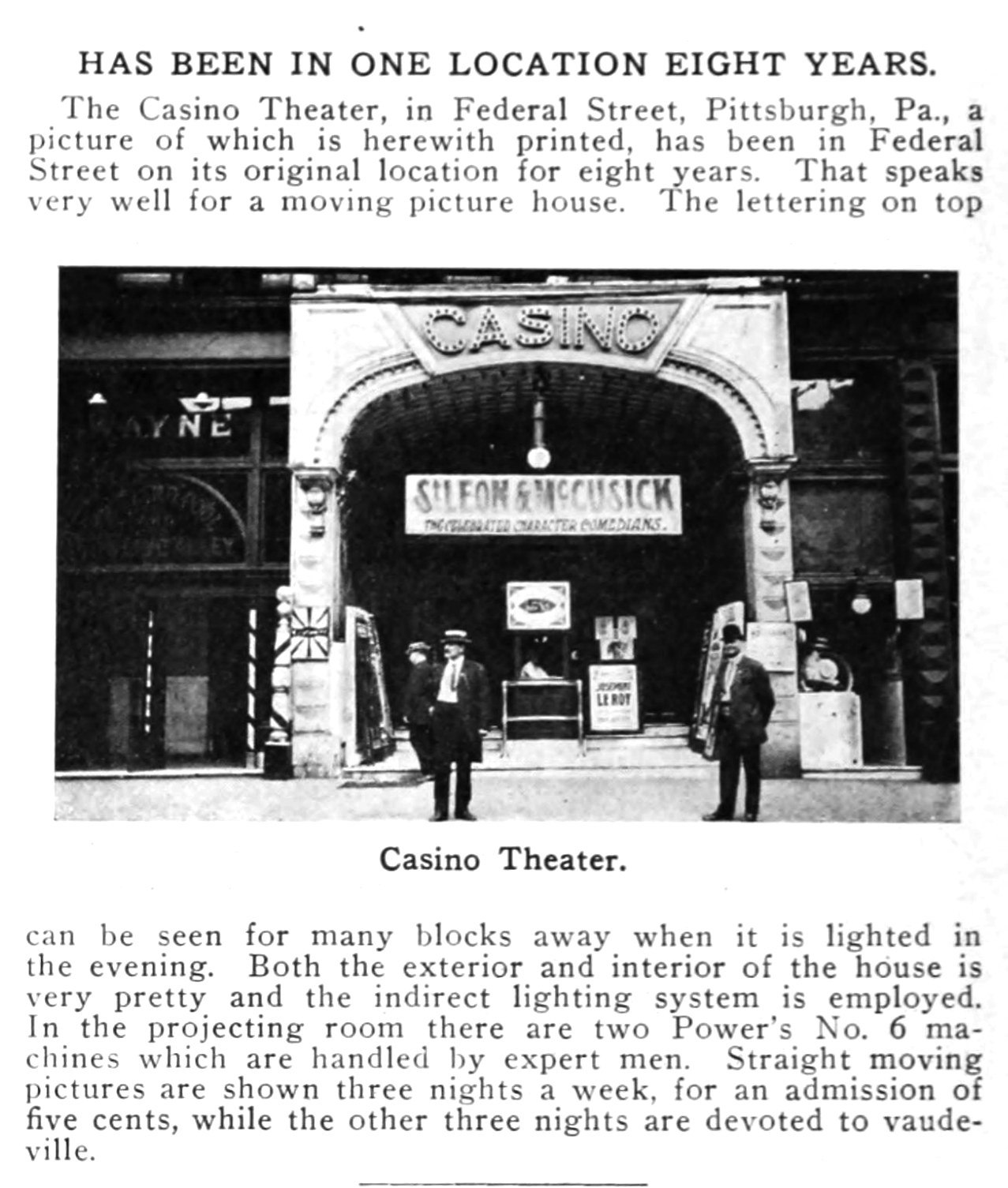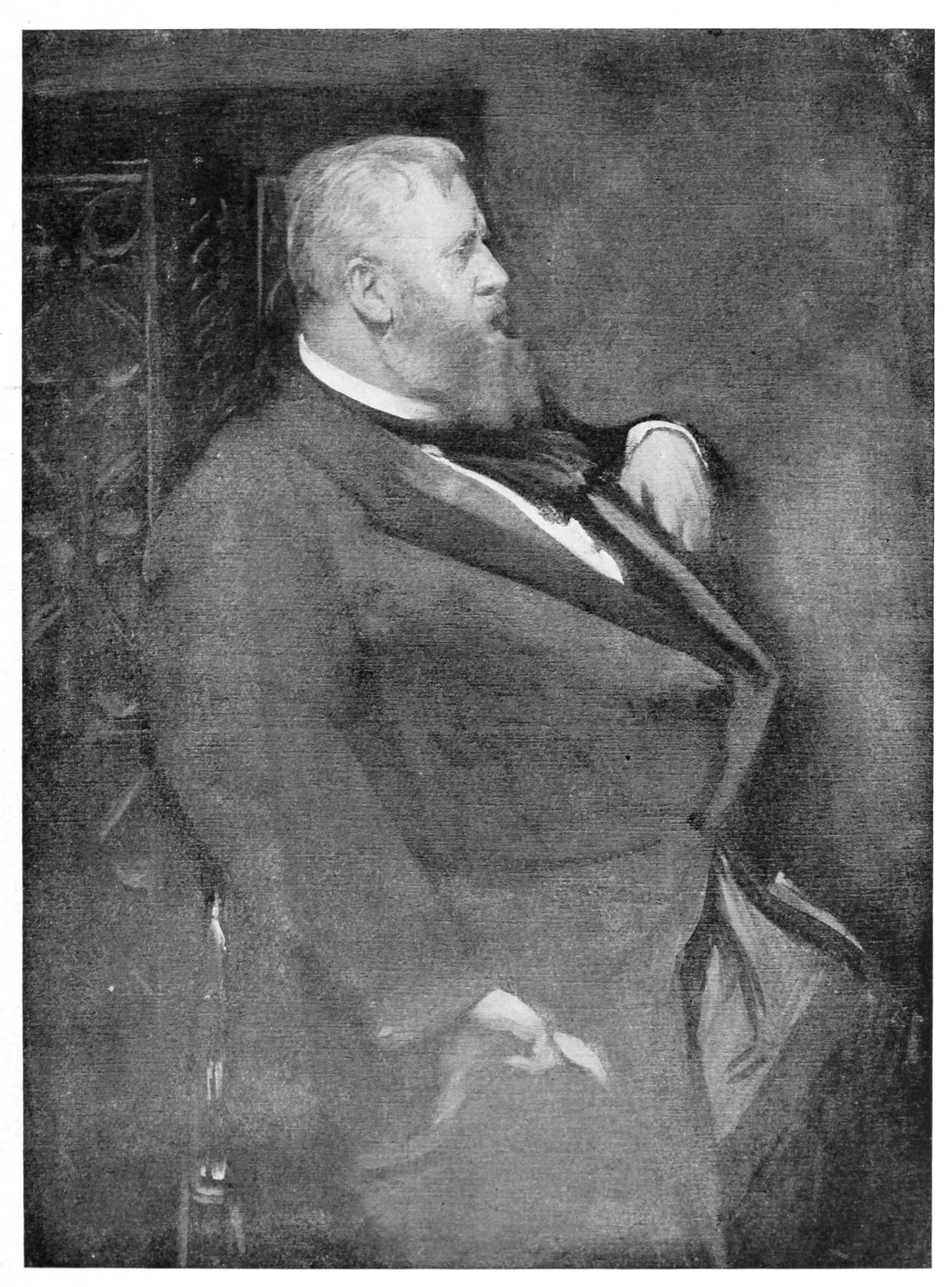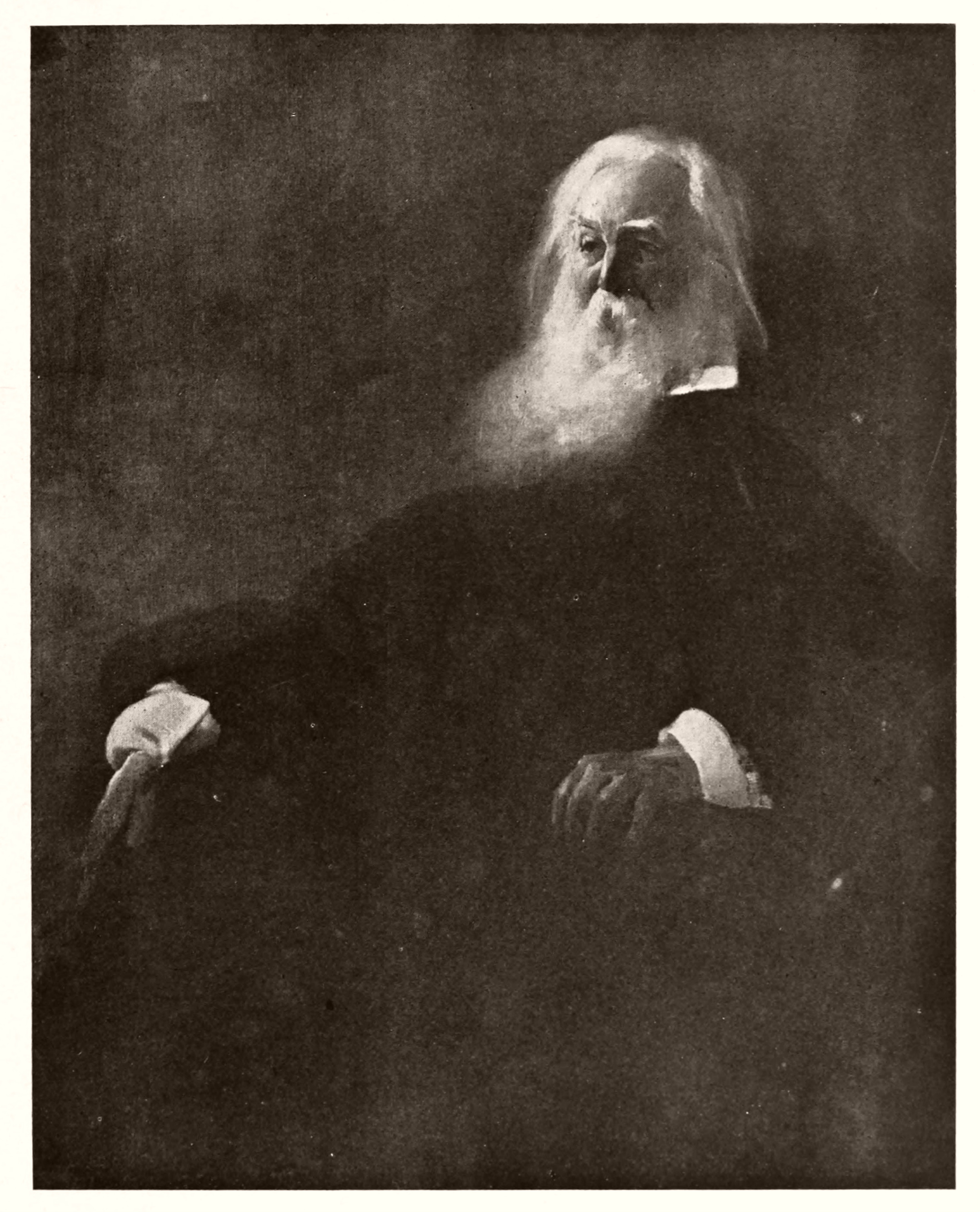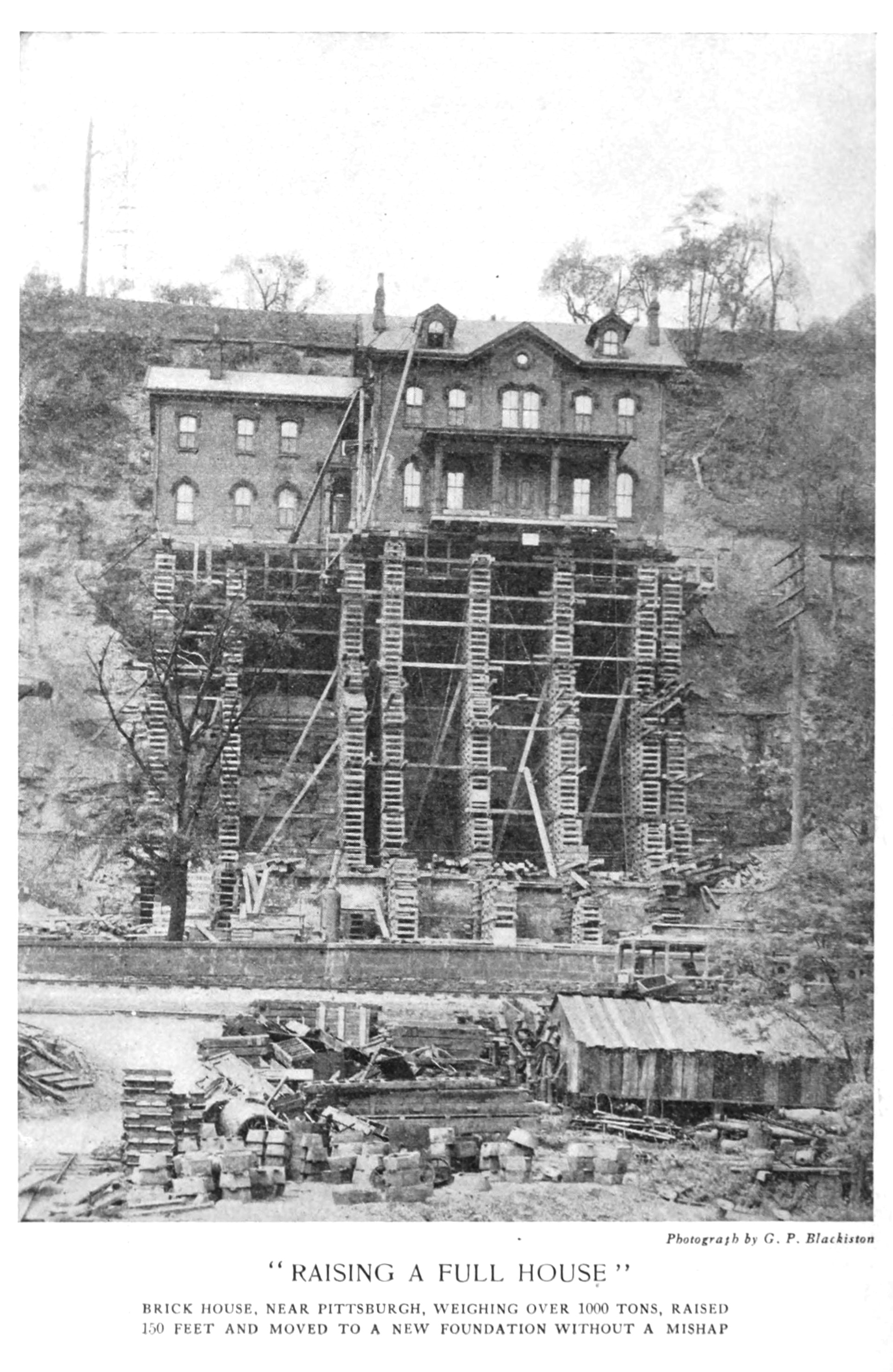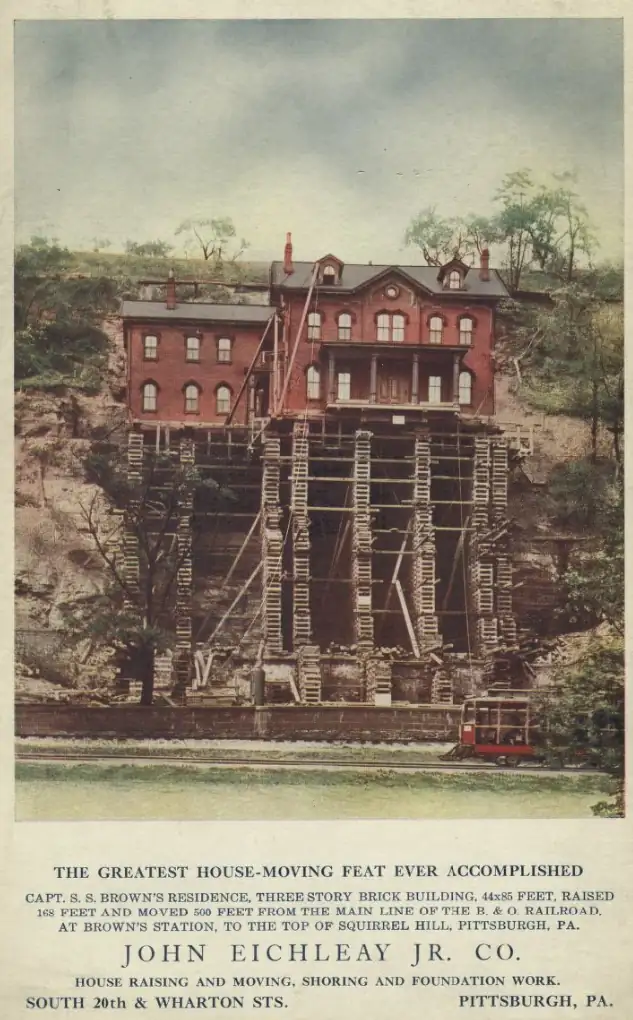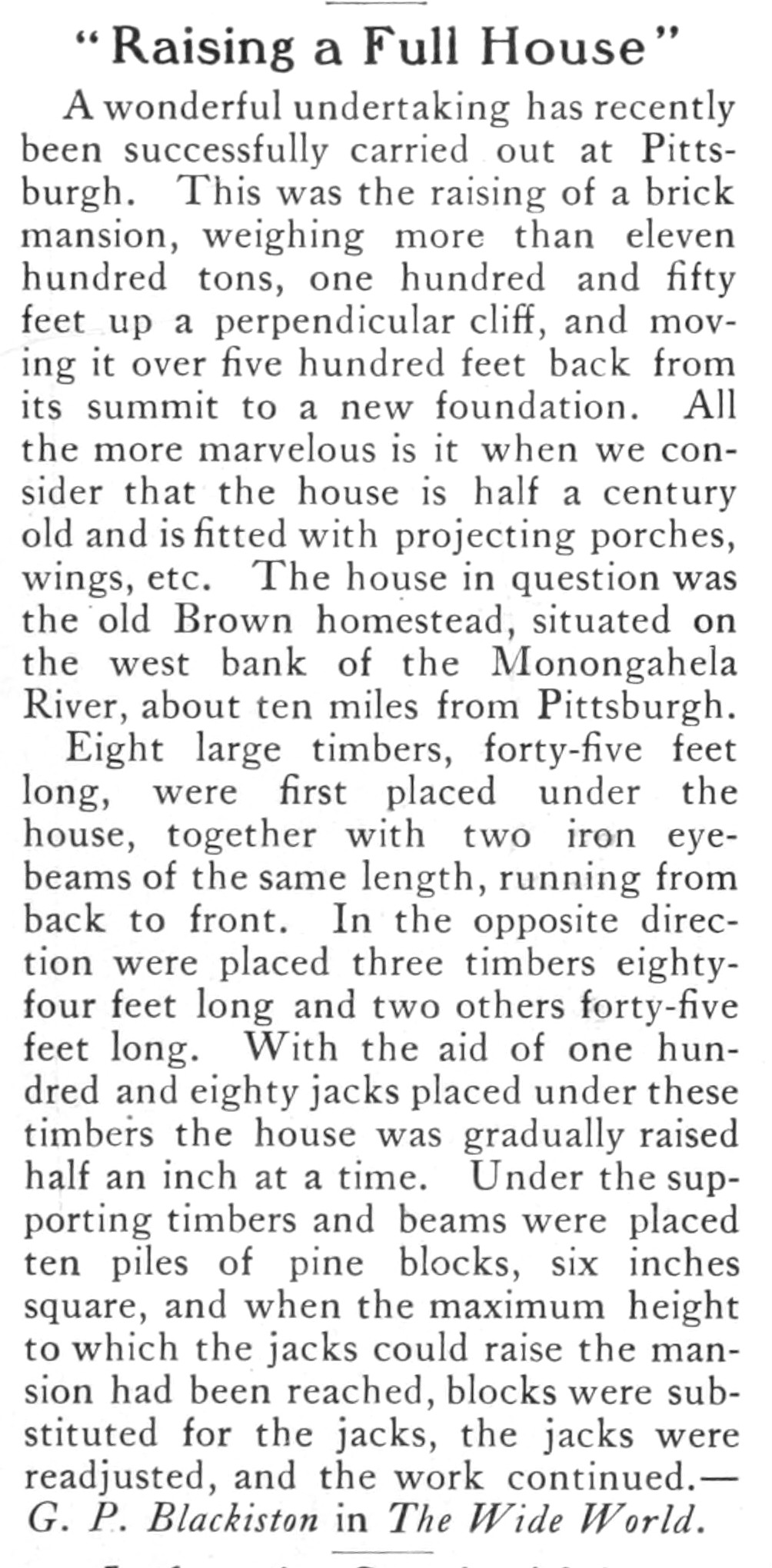
William G. Johnston & Co. was a very successful printing and bookbinding firm that put up this building on Ninth Street at Penn Avenue in 1886. Mr. Johnston would probably be pleased to see that his building looks very much as it did when he knew it, except that—like every other building downtown—it is doubtless cleaner. If you look very closely, you may see a small stitching error, which comes from the fact that this picture is put together from multiple photographs. The lesson, obviously, is not to look so closely.
Addendum: Through various permutations, the William G. Johnston Company was the successor of Zadok Cramer, one of the very early printers and booksellers in Pittsburgh, who began his business here in 1800.
